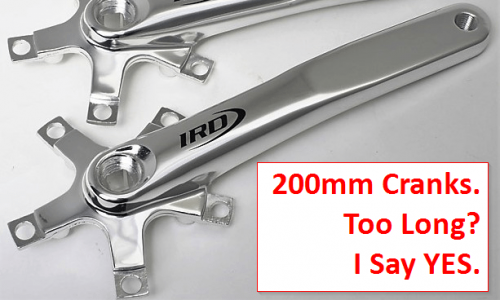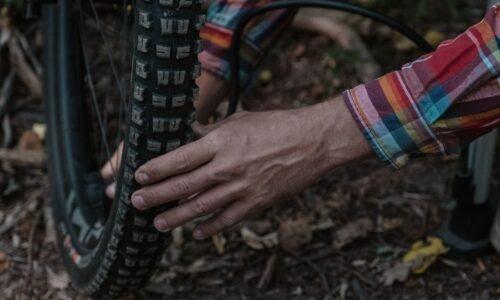Cycling is constantly growing in popularity every year, and we’re seeing more cyclists on the trails and the roads every week. One thing about cycling that’s very unique is the fact that bikes, although they look similar, typically are equipped with lots of different parts that work in different ways.
At bike test reviews, we are often asked a lot of questions about tires. This is due to the fact in the past decade, there have been new types that have hit the market, such as tubeless and hookless.
In this article, we’re going to answer a commonly asked question: Can you put tubes in tubeless tires?
What is tubeless?
The first question to answer is, what is tubeless? Well, tubeless is a unique way that a tire is set up. A typical tire setup is where the tire mounts onto a clincher rim, and an inner tube is inserted inside and blown up.
A tubeless setup is very different. Instead of having inner tubes inside, you have a sealant, which means the tire doesn’t require an inner tube and can hold air all by itself.
A clincher tubeless is the most common tubeless wheel and has what they call a bead, which is important, as we will discuss this later.
What is Hookless?
 Then we have hookless, and hookless is another type of tire that has only started getting popular in the last couple of years. It’s unique because it requires special hookless wheels and tires which don’t have a bead on, making them lighter and faster.
Then we have hookless, and hookless is another type of tire that has only started getting popular in the last couple of years. It’s unique because it requires special hookless wheels and tires which don’t have a bead on, making them lighter and faster.
These hookless wheels also use a tubeless system to work, but both wheels and tires are very expensive for a very small gain.
Hookless wheels are different from your typical clincher tubeless wheels because they don’t have a bead, and this is important, as we will speak about this later.
What are the advantages and disadvantages of tubeless?
Tubeless does come with some amazing advantages over the standard inner tube system. It’s becoming increasingly popular because;
It can self-heal
Tubeless tires, when punctured, have the ability to self-heal. The sealant can block punctures, and you don’t even need to stop cycling the majority of the time. You can use plugs if the hole is too large and won’t seal.
It’s lighter
Tubeless tires are typically much lighter as the weight of the inner tube is removed. Although the sealant does add some weight, it is much less than an inner tube.
It can be run at lower pressures
 Tubeless because it uses sealant instead of an inner tube, you don’t have the risk of pinch flats. This means you can run your tires at much lower pressures making the ride much more comfortable and can give better grip on and off-road.
Tubeless because it uses sealant instead of an inner tube, you don’t have the risk of pinch flats. This means you can run your tires at much lower pressures making the ride much more comfortable and can give better grip on and off-road.
Although on the surface this sounds perfect, some cyclists tend to avoid tubeless because of a few reasons, such as;
Cost
Tubeless tires are more expensive. For companies, the compound is much harder to create, and because of this, the price has to be higher.
Set up
Tubeless tires are harder to set up, and you typically require a special boost track pump to do this. This is another expense and skill you will have to learn.
Can you use inner tubes on tubeless wheels?
The short answer is yes but only on a tubeless clincher wheel. This is because clincher wheels can both use inner tubes and tubeless easily. It’s common that when riders get a rip in a tubeless tire that is too big to fix, they put an inner tube in instead to help them get home.
For hookless wheels, it is recommended that you don’t use an inner tube in. This is because they don’t have a bead, and it’s recommended by manufacturers that inner tubes shouldn’t be used.
Some hookless wheel manufacturers say you can use an inner tube in an emergency situation but only with a hookless tire on the hookless rim, and it’s at your own risk if it breaks.
Can you use normal inner tube clincher tires on tubeless wheels?
Another question we get asked regularly is whether you can use standard inner tube clincher tires on a tubeless wheel. The answer is the same as above. You can use a clincher tire, and it will be fine.
Using hookless tires on clincher wheels will not work and can cause issues with the tires not working correctly and slipping off. It’s the same with using clincher tires on a hookless wheel. They are not compatible.
Conclusion
You can use inner tubes on tubeless wheels providing they are clincher and not hookless. We recommend a tubeless setup as they come with so many advantages and can really add to your riding experience.

Robbie Ferri has spent years working in a bike shop, has worked with industry leading brands on product creation, has been a semi pro athlete, and is a fully qualified strength and conditioning coach. He has broken World Records, bikepacked all over the World and raced ultra distance at a top-level.




